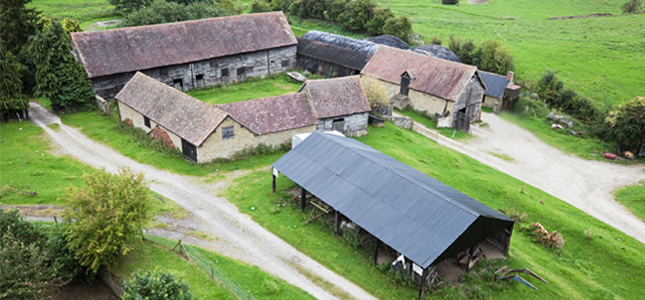The number of homes being built in the countryside could receive a much-needed boost following a relaxation of the rules for converting agricultural buildings into residential properties.
With the Government pushing forward its housebuilding agenda, on the 6th April 2018 the new rules came into force to make it easier for people living in rural areas to convert unwanted farm buildings into family sized and affordable homes.
Under the new permitted development rights, up to five new homes can be created from existing farm buildings rather than the previous maximum of three.
According to Dominic Raab MP, Minister of State for Housing, the new measures will give rural communities “more options to convert agricultural buildings into family homes to better meet local housing needs”.
Gareth Lay, associate at Bruton Knowles in Shrewsbury, said: “For anyone looking to buy or rent a home in the countryside, this is good news. The changes will help rural communities make the most of existing buildings while helping to meet housing need at the same time.
“Hundreds of new homes each year are created through conversions of agricultural buildings, and with these changes now in place these numbers are expected to increase.”
In addition to increasing the number of homes permitted from the conversion of farm buildings, the government is also giving applicants an extra year to convert further storage and outbuildings into new homes.
Gareth said increasing the number of new homes permitted on any given development could prove crucial in ensuring schemes were economically viable.
“These changes could be applied to help meet affordable housing targets, particularly in rural areas where affordable housing provision has become problematic,” he said. “However, more guidance is required on the level of conversion work that is acceptable.
“It’s counter-productive if after spending significant sums on designing a new housing scheme, the local council rules that the level of conversion work is too extensive and more akin to a new build.
“Farmers looking to free up redundant space to maximise the value of their farms as a buffer against Brexit are often being stymied by stringently applied planning regulations. Farmers needed to be given every opportunity to maximise their assets – up to and including re-developing surplus farm buildings to help them offset loss of subsidies.
“While some local councils remain reluctant to recognise permitted development, clearer guidance would provide greater clarity to both landowners and local authorities.”
For help with all your property matters contact Gareth Lay on 01743 770084 or email This email address is being protected from spambots. You need JavaScript enabled to view it.


